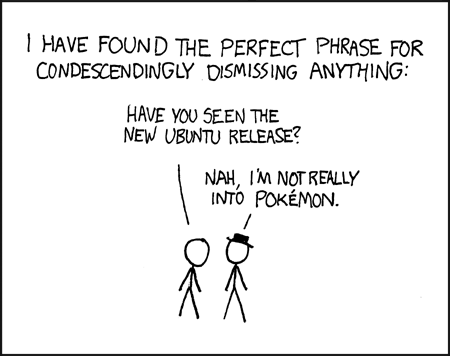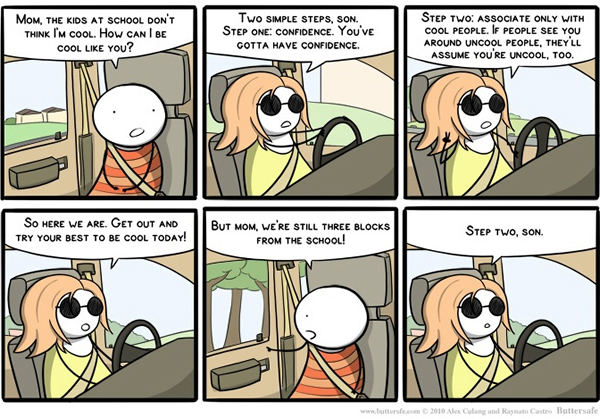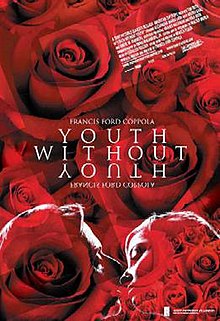Universe is about increasing entropy, which in turn is about increase in randomness....this is a logbook of random stuff which increases entropy in my life
Tuesday, April 26, 2011
Monday, April 25, 2011
Friday, April 22, 2011
Saturday, March 26, 2011
Osho Discourses: Anger and Sadness
Question:Osho, I can feel myself moving from anger into sadness. I don't know whether I should try and get the anger out or just let it explode inside.
Osho:
Anger and sadness are both the same. Sadness is passive anger and anger is active sadness. Because sadness comes easy, anger seems to be difficult. because you are too much in tune with the passive.
It is difficult for a sad person to be angry. If you can make a sad person angry, his sadness will disappear immediately. It will be very difficult for an angry person to be sad. If you can make him sad, his anger will disappear immediately.
In all our emotions the basic polarity continues -- of man and woman, yin and yang, the male and the female. Anger is male, sadness is female. So if you are in tune with sadness, it is difficult to shift to anger, but I would like you to shift. Just exploding it within won't help much because again you are seeking some way of being passive. No. Bring it out, act it out. Even if it looks nonsense, then too. Be a buffoon in your own eyes, but bring it out.
If you can float between anger and sadness, both become similarly easy. You will have a transcendence and then you will be able to watch. You can stand behind the screen and watch these games, and then you can go beyond both. But first you have to be moving easily between these two. otherwise you tend to be sad and when one is heavy, transcendence is difficult.
Remember, when two energies, opposite energies, are exactly alike, fifty-fifty, then it is very easy to get out of them, because they are fighting and cancelling each other and you are not in anybody's grip. Your sadness and your anger are fifty-fifty, equal energies, so they cancel each other. Suddenly you have freedom and you can slip out. But if sadness is seventy percent and anger thirty percent, then it is very difficult. Thirty percent anger in contrast with seventy percent sadness means forty percent sadness will still be there and it will not be possible; you will not be capable of easily slipping out. That forty percent will hang over you.
So this is one of the basic laws of inner energies -- to always let the opposite polarities come to an equal status, and then you are able to slip out of them. It is as if two persons are fighting and you can escape. They are so engaged with themselves that you need not worry, and you can escape. Don't bring the mind in. Just make it an exercise.
You can make it an everyday exercise; forget about waiting for it to come. Every day you have to be angry -- that will be easier. So jump, jog. scream, and bring it. Once you can bring it for no reason at all, you will be very happy because now you have a freedom. Otherwise even anger is dominated by situations. You are not a master of it. If you cannot bring it, how can you drop it?
Gurdjieff used to teach his disciples never to start by dropping anything. First start by bringing it in, because only a person who can create anger on demand can be capable of dropping it on demand -- simple mathematics. So Gurdjieff would tell his disciples to first learn how to be angry. Everybody would be sitting and suddenly he would ay, "Number One, stand up and be angry!" It looks so absurd.
But if you can bring it.... And it is always available, just by the comer, you just have to pull it in. It comes easily when anybody provides an excuse. Somebody insults you -- it is there. So why wait for the insult? Why be dominated by the other? Why can't you bring it yourself? Bring it yourself!
In the beginning it looks a little awkward, strange, unbelievable, because you have always believed in the theory that it is somebody else whose insult has created the anger. That's not true. Anger has always been there; somebody has just given an excuse for it to come up. You can give yourself an excuse. Imagine a situation in which you would have been angry, and become angry. Talk to the wall and say things, and soon the wall will be talking to you. Just go completely crazy. You have to bring anger and sadness to a similar status, where they are exactly proportionate to each other. They will cancel each other out and you can slip away.
Gurdjieff used to call this "the way of the sly man" -- to bring inner energies to such a conflict that they are engaged together cancelling each other, and you have the opportunity to escape. Try it, mm?
Thursday, March 24, 2011
Wednesday, March 23, 2011
Zola Jesus - Smirenye - Last.fm
Tuesday, March 22, 2011
Swami Vivekananda
| Swami Vivekananda |
![[Swami Vivekananda]](http://www.freemasonry.bcy.ca/biography/images/vivekananda.jpg) | Anchor and Hope No. 1, Kolkotta |
Sunday, March 20, 2011
Extremely Extreme « Dr. Claudia Welch
Extremely Extreme
December 18, 2010 by drclaudiawelch
I was thinking lately…
I was thinking that traditionally the Aghora sect of Hinduism has, at least in part, at least according to my understanding, embraced practices that would seem extreme to non-Aghori Hindus.
Or just about anybody else. Meditating in graveyards, maybe on corpses, inviting a relationship with what others would shun, in order to arrive at acceptance of, and relationship with, Reality. They had no use for the dogma of the elite—nor the snootiness that often accompanied. In going against the momentum of mediocrity, they attempted to engage in living alchemy and embrace Reality. Of course, there are other examples of individuals preferring to live according to a Truth that landed them in trouble with the presiding ruling class or Powers that Be (or Were). Saint Francis. Jesus. Guru Arjun Dev. Boston Tea Party. You get the idea.
It has occurred to me that, today, going against the tide would have to look very different from how it would have had to look a century ago. Or even quarter of a century. These days extreme is the soup du jour. From Fear Factor to Extreme Makeover to people You Tubing your latest stunts (“this is me launching myself into a brick wall,” etc.), to photos of naked musicians covered in blood adorning popular magazines, to speeding up football (which is kind of cool, actually…see: http://www.nytimes.com/2010/12/05/magazine/05Football-t.html?_r=1&nl=todaysheadlines&emc=a210) it is hard to think of what it would be that modern society would shun as too extreme.
What would be the most extreme thing we could do now? What would out-extreme extreme? The thing we could do that would establish us as serious swimmers against the tide, as shaking off the status quo and becoming situated in our selves?
Friday, March 18, 2011
Thursday, March 17, 2011
5 Real Life Soldiers Who Make Rambo Look Like a Pussy | Cracked.com
Who Was He?
Yogendra Singh Yadav was a member of an Indian grenadier battalion during a conflict with Pakistan in 1999. Their mission was to climb 'Tiger Hill' (actually a big-ass mountain), and neutralize the three enemy bunkers at the top. Unfortunately, this meant climbing up a sheer hundred-foot cliff-face of solid ice. Since they didn't want to all climb up one at a time with ice-axes, they decided they'd send one guy up, and he'd fasten the ropes to the cliff as he went, so everyone else could climb up the sissy way. Yadav, being awesome, volunteered.
Half way up the icy cliff-o'-doom, enemies stationed on an adjacent mountain opened fire, shooting them with an RPG, then spraying assault-rifle fire all over the cliff. Half his squad was killed, including the commander, and the rest were scattered and disorganized. Yadav, in spite of being shot three times, kept climbing."
Wednesday, March 16, 2011
YouTube - Instrumental Rap Beat 2
Wednesday, March 9, 2011
Sunday, March 6, 2011
10 things to test before buying a used DSLR | ADIDAP
1. Body inspection: Let’s take out the most obvious thing first, inspect throughly the body for any trace of damage or abuse.
Minor scratches are normal and should worry you a lot, more pronounced scratches aren’t harmful either but they are story telling about the history of the camera.
2. Auto Focus accuracy: Use a lens you already know to be focusing fine and test the auto focus accuracy of the digital camera by taking some “real life” pictures of well contrasted and well lit objects using the central focus point with the lens set to its widest aperture, download the pictures to your computer and check for front/back focus. Also make sure to check that all other focus points are working, no need to test them for accuracy.
3. Sensor inspection: Shoot a defocused white wall at f/22 download the picture to your computer and check it at 100% for sensor scratches.
N.B.: Some dust spots are normal, they are often even found on brand new cameras.
4. Shutter inspection: Ideally speaking check the number of shutter actuations and compare it with the shutter life cycle of the camera you are planning to buy. If it is impossible to know the actual number of shutter actuations, inspect the shutter curtain visually for wear and damage.
5. Colors inspection: I know that colors can easily be fixed and that they are factors of a lot of things, but I have seen some DSLR which colors are really really bad, just take a couple of shots in daylight with White Balance set to Auto WhiteBalance
Goodreads | The Myth of Sisyphus and Other Essays by Albert Camus - Reviews, Discussion, Bookclubs, Lists

The other option is the absurd, for which this book is written. The problem asks is it possible not to commit suicide in a meaningless world and without faith in God. The absurd man simply states, I and my plight are ephemeral, but I still choose life. Why?
The comparison to Sisyphus is made through this absurd man. A man who is doomed by the gods to perpetually push a rock up a mountain which becomes steeper as it moves up. Eventually slope takes the better of the effort and as a matter of prescribed definition the rock falls down the hill; to which, the man, Sisyphus, must start again. The absurd man follows the archetype of the Sisyphus myth of which Camus says is “wanting to know,” and in wanting to know realizing that the whole of existence is a continuous repetition, nothing is gained nor loss; “the sin of which the absurd man can feel guilt and innocence.”
This is not existentialism. It is presupposed in an existence without explanation that it is unreasonable to assume anything concrete. As Camus puts it, “the theme of the irrational, as it is conceived by the existentials, is reason becoming confused and escaping by negating itself.” He confines the absurd to, rather than negation, setting up a “lucid reasoning,” or playground for activity, and merely “noting limits” so that you are free to work within your living situation.
It’s all about cheerful compliance. Realizing you’re in the situation and you’re damned to it. Fuck it. It’s not that I’m lost in this absent void of existence, with no telling of the future and no cause for impetus. I realize that there is a chance, be it strong or tiny, that there is a vastness far beyond the compelling straits of life that leave me wondering “what’s the difference?” If I do anything, I am compelled to the possibility of it not mattering. Camus was talking about a “lucid indifference” to this. Saying, I live it. It would be a crime to strip my life of the possibility of something. Even if I am a slave I can sing. I give up on morality, a legitimization of my actions that either says this, based on prescribed foundations “okays” it or disallows it. Really, the impetus is for responsibility. What I do in this life is directly reflected in this life. If I steal, then there is recourse. If I lie; but what if someone lies to me? I guess it’s the categorical imperative, but sans morality. Morality lines things within the sights of God, establishing guilt. What is guilt? It’s mindless, an obscenity. I feel guilt for not abiding to my addiction. Who can identify the real factions of guilt, who can identify its sincerity. It’s emotional. I’d rather be rational. I’d rather see that this whole circus, a great jibe of the floating, tender inevitability of death is but a contraption set for me to build and destroy and collect and decipher. Camus said, “for the absurd man it is not a matter of explaining and solving, but of experiencing and describing. Everything begins with lucid indifference.” I am in a state of despair. Anything that I do has no value. On the other hand, I am living and I am breathing and in a strange way I have a personal freedom unpronounced by most people who establish their own freedoms. All I have to do is have faith in my freedom and like a majesty that is lain out in silver robes before me, it is there. I only have to respect that I am living in a free slate, unmitigated by a stratified moral imperative that limits so many people from following intuition and there actual imperative needs. Do you believe in destiny? That we all have a purpose and it is designated by our need to imbibe the principles of our life into a system that we can identify for ourselves. There is that mode of philosophy that says that we are the people whom we are, we are meant to be these people, this specific type of person completely genuine to himself and totally as that self. My identity is the world surrounding me combusting into a single frame that I can represent justly by my merely living life as I should be doing it. I do not need to live up to this social strata of an impartial development towards nowhere, rather I should live life as I make fit, feeling good. Feeling established. So what if my endeavors are rooted to rolling a rock up a hill at least I have something to do, in the formation of my universe I need a place to put what is concrete, even if there is nothing concrete. As analogous creatures, if we do not have any basis to compare then we are no more capable of being thoughtful than a bar of soap. I’d rather be the dirt, simply abiding to my state of being, minus the will, minus the infirmity, I’d be an obstacle for the righteous, and standing in the way I could laugh at the adversity, laugh at the spectacle of my life so deranged in its absurdity. And at the last moment before my death, that is how I could acknowledge that I was alive. Or how I am still alive, whatever.
Saturday, March 5, 2011
bheegi sili si ek raat hai - 1:40 ki last local! - Indian Guitar Tabs
bheegi sili si yeh raat hai
C#m……………………….E
halka halka sa hai nasha
E……………………….C#m
saath mein ladki ek haseen
C#m……………………….E
baithe baithe hai aa phansi
Fm………………………...........
kismat se mila hai mauka
A…………………...........E
achhataayega tu jo socha
Fm…………………........
kal ki hai kisne jaani
A………………............E
aage na jaane hoga kya
Fm………....A………......E…….C#m
hoga kya? jaane kal, jaanu na
Fm………....A………......E……..C#m
hoga kya? jaane phir, jaanu na"
significance of hair color in anime
I just figured out, in a blinding flash of the obvious, that book-Howl, in turning a platinum blond before the end, is fulfilling the line in the curse: 'till age snow white hairs on thee.' I wonder what happened offstage that caused his hair to turn white. I guess someone will have to write a fanfic explaining it. :"
Shakshouka - Wikipedia, the free encyclopedia
 Shakshouka (Arabic: شكشوكة; Hebrew: שקשוקה) (also shakshuka) is a dish from the Maghreb of Tunisian origins[1][2] consisting of eggs cooked in a sauce of tomatoes, peppers, onions, and spices (often including cumin, turmeric, and chillies), and usually served with white bread. The name shakshouka inTamazight means "a mixture".
Shakshouka (Arabic: شكشوكة; Hebrew: שקשוקה) (also shakshuka) is a dish from the Maghreb of Tunisian origins[1][2] consisting of eggs cooked in a sauce of tomatoes, peppers, onions, and spices (often including cumin, turmeric, and chillies), and usually served with white bread. The name shakshouka inTamazight means "a mixture".The most common Maghrebi variant includes onions and tomatoes over eggs, which may be scrambled, poached, or fried. It is similar to the Turkish dishmenemen, and the Mexican breakfast dish huevos rancheros.
Another variant consists of a mixture of cooked vegetables (spinach, celery, coriander, cauliflower, potatoes and green peas), and sometimes meat, similar to the French ratatouille.
Shakshouka is now a staple of Tunisian, Algerian, and Moroccan cuisines, and is also popular in Israel, where it was introduced by Tunisian Jews
Thursday, March 3, 2011
This Ugly Yet Beautiful World - Wikipedia, the free encyclopedia
Wednesday, March 2, 2011
Tuesday, March 1, 2011
Monday, February 28, 2011
Sunday, February 27, 2011
The Top 50 Essential Novels for Weirdos | Geez Pete




















































As with the non-fiction list, I’ve hyperlinked each title to its listing at the online store for Powell’s Books in Portland, OR. Support your local independent bookstore, or head to Powell’s for online purchases. Thanks!
- A Clockwork Orange by Anthony Burgess: First published in 1962, Burgess must have sniffed some of the oncoming adolescent uprising wafting through the air. Long since considered a 20th century classic (despite Burgess disavowing it in the ’80s as “a jeu d’esprit knocked off for money in three weeks”), it’s more affecting than Kubrik’s film, which is saying something.
- A Confederacy of Dunces by John Kennedy Toole: The lore of this book’s discovery and publishing seems to frequently overtake its sheer brilliance in making you love one of literature’s most ridiculous anti-heroes. Protagonist Ignatius J. Reilly is a Comic Book Guy of the highest order, completely disgusted by barbaric schmucks long before he’s forced to go out and get a job among them. Worth noting: Confederacy is also a time-capsule portrayal of New Orleans in all its mid-century glory.
- American Psycho by Bret Easton Ellis: This book holds a singular status with me: It is the only book that, when I was done reading it, had freaked me out so completely I wanted it out of my house. I think I recycled it. The film version very neatly displayed it as a modern comedy of manners, but the book version is absolute fucking sociopathic gore. Be ready to spend the rest of your days convinced that there are actual Wall Street guys like this out there.
- Battle Royale by Koushun Takami: I understand that there’s a somewhat similar version of this concept out there in The Hunger Games series, but this is the completely mental Japanese original. A class full of children are released on a deserted island and must kill or be killed until only one is left. Did I mention zones of the island slowly become off-limits, pushing them closer together? Downside: It’s pretty cheap, pulp-y writing. Upside: Bananas concept.
- Black Hole by Charles Burns: Those of you who are comics superfans would certainly point out that this book was serialized over a long period, but I encountered it as a complete work. Set in Seattle in the ’70s, teenagers are contracting a disfiguring disease, sending them into shameful hiding. The metaphor for adolescence and puberty is not terribly subtle, but Burns’ ability to capture anxiety in his stark, disturbing images and stilted, bewildered dialogue will haunt you.
- Borderliners by Peter Hoeg: I still find it hard to believe this is by the same guy who write the accessible hit Smilla’s Sense of Snow. Set in a mysterious private boarding school near Copenhagen, the troubled teenage protagonists — who might be criminals, or might be victims — struggle to understand the rules of their draconian surroundings, and begin to question not just where they are, but when.
- Brave New World by Aldous Huxley: Though we’re stuck in a Fox News-dipped America where Orwell’s totalitarian 1984 is taken as some sort of gospel, I insist on a return toBrave New World as an alternate and more instructive brand of futurism. In 2011, its suggestions of human detachment and incubator living sound a lot more like our Facebook-driven world than Orwellian oppression: Connected, but totally disconnected.
- Bunny Lake Is Missing by Evelyn Piper: Republished recently in a “Women Write Pulp” series, Bunny Lake is a brilliant proto-feminist Hitchcockian tale you’ll devour in a single sitting. Single mom Blanche Lake goes to pick up daughter Bunny from her first day of school, but she never emerges. No teachers remember her. Neither do the students. In fact, no one remembers the increasingly frantic Blanche having a child, period.
- Clockers by Richard Price: I can’t believe that this only just occurred to me, but think of 1992′s Clockers as the predecessor to The Wire. Set in a New Jersey housing project and steeped in the crack epidemic, it’s a gritty hunk of urban realism woven around cops and dealers, good and evil, money and power. Highly recommended for anyone into crime novels, and unimpeachable in its dead-on drug trade dialogue and action.
- Dhalgren by Samuel R. Delany: I don’t want to drive a wedge between you and your loved ones, but this thing is 800 pages. In fact, I’m normally totally against e-readers, but to be frank, Dhalgren might have broken me. Nominally about a disaster that’s struck a Midwestern town, causing all kinds of sci-fi mishegas — timeline shifts, natural disasters, identity twists — it’s really about something much bigger and cooler. And if I told you what that was, it would ruin it. I said no spoilers!
- Geek Love by Katherine Dunn: While it would be easy to place Geek Love on this list by mere virtue of it being about circus freaks, what’s incredible about it is Dunn’s artful character development. Let’s face it: The Binewski family, “homemade” freaks thanks to intentional experimental drug use during pregnancy, are pretty creepy. So why do you have so much affection and sympathy for them by the end?
- Ghost World by Daniel Clowes: Another graphic novel that was originally serialized (within Clowes’ Eightball in the mid-’90s), Ghost World captures the essence of the ’90s alt mentality (disdain for pop culture, fetishistic love of vintage, ironic love of the tacky) while depicting the awkward stumble from adolescence to adulthood. Enid and Rebecca have been friends since childhood, but once they graduate high school, then what? Beautifully drawn and achingly real.
- Go Ask Alice by Anonymous: I consider Go Ask Alice to be the Reefer Madness of the ’70s. Though purportedly the diary of a young girl gone bad from drugs and negative influences, any smart reader can practically picture the square who penned this thing in an office somewhere. It’s kind of hilarious, too. “It started when she was served a soft drink laced with LSD in a dangerous party game…” LSD? In the soda!? Dangerous party games?!? Gasp!
- High Fidelity by Nick Hornby: There’s a lovelorn story in here somewhere, but I’m mostly including this because it’s rapidly becoming an artifact. Protagonist Rob owns a record store (a store! where you buy physical things that play music!) and is an obsessive mix-tape making, list-compiling collector of the sort that the 21st century is quickly erasing. Stealing tens of thousands of songs and casually leaving your iTunes open when people come over… it’s just not the same.
- Hunger by Knut Hamsun: Inspired by his own struggles before achieving success, Norway’s Hamsun details the psychological and physical decline of a young man stuck in the streets, falling to pieces and stumbling recklessly through the underbelly of the city. He claims he’s a genius and above working. He has violent fits. He wails in misery and starvation but obviously masochistically loves his situation. It’s an ugly, ugly story, and totally gripping. A devolving psychological thriller. Have snacks nearby.
- Invisible Man by Ralph Ellison: Narrated by an unnamed African American man who deems himself “invisible” to the world, Invisible Man is an autobiography of sorts, though entirely surreal. He recounts his life starting with his academic excellence as a young man, continuing through a lifetime of racially-charged, sometimes violent, often bizarre incidents that feel like a defiant fever dream. Most shocking of all: Invisible Man was published in 1952. Can you imagine the reaction?
- LA Confidential by James Ellroy: The entire Ellroy oeuvre — a prolific, starkly modern take on the classic hard-boiled crime noir found elsewhere in this list — is something to behold. But if forced to recommend one title, I have to pick this one. It’s packed with every bit of Ellroy’s singular vision: organized crime, corrupt politicians, sex, Hollywood, sultry women, scandal sheets, and cops wandering into the grey areas in and around all of it. Epic.
- Labyrinths by Jorge Luis Borges: There’s certainly no better title for this collection of short works by Argentinian Jorge Luis Borges. His work, his career, his life, his mind — all fit into that description. He’s a difficult guy to blurb, but my best effort is that Borges is a seminal magical realist, with deep interest in mythology, imagination, dreams, identity and the nature of reality. He’s more of a poet than a storyteller, and Labyrinths is a deep dive into his murky, mystical world.
- Last Exit to Brooklyn by Hubert Selby Jr.: Set in lower-class Brooklyn in the ’50s, Last Exit is comprised of six discrete stories, each about the sort of hardscrabble, quasi-criminal lives Selby encountered while working in the now-globally-branded borough. Coarse and full of slang and frank situations, it’s not a book that pulls punches. Ugly stuff. So much so that it encountered (and eventually won) an obscenity trial in the UK.
- Less Than Zero by Bret Easton Ellis: American Psycho is Ellis’ best work, but Less Than Zero is the best depiction of the desperate hedonism of the young and wealthy in the ’80s. College student Clay returns from the East Coast to Los Angeles for Christmas break, and dives straight into the endless drugging and screwing he left behind. Sounds saucy, until you start to feel bleary and confused and vacant, which is the point. The big party of the ’80s was mostly an effort to stuff an empty, bottomless pit.
- Lord of the Flies by William Golding: You may have been forced to read this as a kid, but read it again as an adult. This is life, tidily summed up in about 250 pages. Life at work. Life with friends. Life at a sale at Target. Life in traffic. Life in line at a deli. Life. I would have read it a lot more closely in grade school if they’d just told me! Shit!
- Myra Breckinridge/Myron by Gore Vidal: It’s probably ridiculous that of Vidal’s massive body of work, I’ve chosen to include this campy, relatively frothy set of gender-bender novels. Dismissed as pornography when released, queer scholars consider 1968′s Myra to be groundbreaking in subverting gender norms. To a casual reader, it’s arch hilarity, as male-to-female trans Myra heads to Hollywood and teaches courses like “Posture” at an acting school for girls. Naughty, biting, and a total hoot.
- Naked Lunch by William S. Burroughs: It would be fairly disingenuous to say many people have read this, cover to cover, curled up in their favorite reading chair, sipping a cup of chamomile tea. Frankly, it’s completely fucked up. And it’s not even really a novel. It’s the assembled assorted hallucinogenic writings of Burroughs as he hoovered opiates in a Tangier hotel room. Academic discussions refer to it as a pioneer of “non-linear style.” OK, sure. It’s probably much better described as cracking open the brain of a brilliant person saturated in drugs, and taking a long, very weird look around.
- One Flew Over the Cuckoo’s Nest by Ken Kesey: The film version of this book has long overtaken the novel, largely thanks to an iconic, peak-era Jack Nicholson performance. Kesey’s book has a much more subtle, heartbreaking arc, and deeper levels of symbolism than a neatly-packaged film could telegraph: institutions and conformity, rebellion and its costs, whether or not you can “go along” and really be alive, and what you’re willing to do about it.
- Pimp by Iceberg Slim: Though billed as an “autobiographical novel,” I’ve included this here because Slim went on to write only fiction. Yeah, he was indeed a pimp, but what’s he going to do to me? Pimps aren’t violent, right? (Alright, he died in 1992 as well.) Bleak, violent and horrifically real, it was dismissed as an ugly, cheap fringe novel upon release before ultimately selling a blockbuster two million copies. It should also make you seriously rethink the casual use of the term “pimp.”
- Pop. 1280 by Jim Thompson: The Grifters and The Killer Inside Me are surely more famous Thompson books than this one, but Pop. 1280 gets my vote by lulling you with some old fashioned comic farce before slowly dropping the hammer: a ruthless psychotic killer is on the loose in this all-American one-horse town, and that population number is gonna start to drop.
- Post Office by Charles Bukowski: I always find it amusing that if you go to the “Bukowski” section of any bookstore, nine times of out ten there will be a note that all his titles are behind the counter. I’m sure Abbie Hoffman’s Steal This Book sits out, unmolested. But Bukowski readers… that’s a mangy bunch, right? Post Office is his best autobiographical novel as alter-ego Henry Chinaski. You could say it’s a document of “going postal” on oneself, as he drags his hungover, miserable ass through days as a postal worker and nights on the sauce with women of ill-repute. A misanthropic classic.
- Seize the Day by Saul Bellow: Tommy Wilhelm is in his 40s, and things haven’t quite panned out. Big dreams of becoming an actor have left him permanently unemployed and a pariah to his father, wife and children, who’ve had it with his pie-in-the-sky shtick. Over the course of this novella’s day, Wilhelm finally hits the wall and comes to terms with his failure and his own part in his predicament. It’s a close cousin to other 20th century classics like Death of a Salesman, but somehow I’ve always felt that Bellow cuts much closer to the bone.
- Steppenwolf by Hermann Hesse: It was a tough choice between this and Demian, but I love the swirl of characters that make up this 1927 philosophical novel. Hesse was fixated on duality, and in Steppenwolf, it’s the opposing forces of intellect and spirituality versus animalistic hedonism. It’s dense and loaded, but fortunately, I’ve found this hilariously thorough diagram on Wikipedia to help you through it.
- The Bad Seed by William March: You may think the cult classic film (a John Waters favorite) is creepy, but the book it’s based on is far worse. Subtract the camp and make the ending a lot more horrifying, mix in the undercurrent of anti-feminist tsk-tsking of her mother (see also Bunny Lake Is Missing), and you have a Twilight Zone episode in a book. But yeah, you should see the movie, too. That thing is nuts.
- The Bell Jar by Sylvia Plath: This is another one of the more famous titles on this list, and it usually makes for interesting conversation, since it’s like a Rorschach test for most readers. To me, it’s the best inside-your-skin description of clinical depression I’ve ever found. Her anhedonic fog and the image she conjures that inspired the title — she feels like she’s under a bell jar, struggling to breathe — ring with terrible truth.
- The Big Sleep by Raymond Chandler: Between Chandler and Dashiell Hammett (below), you’ve got classic hard-boiled fiction covered. If you need any more proof, the recurring main characters used by both of these writers were played on film by Humphrey Bogart. Cred! The Big Sleep was Raymond Chandler’s 1939 debut, and it’s a tightly-woven double-cross-athon. You may want to keep notes.
- The Catcher in the Rye by JD Salinger: You can’t seriously think I’d not include this because it’s too obvious! A few other books got the boot on that basis, but this one simply has to stay. What strikes me about this and books like Lord of the Flies, above, is that so many of us were assigned this reading as kids. That’s good — this is great literature — but I assure you that you barely “got it.” Re-read these. The disillusionment and sheer alienation will hit your adult self far more profoundly.
- The Complete Stories by Flannery O’Connor: Initially, I was concerned that putting a collection on this list was a cop-out compared to choosing something definitive, but the reality is that O’Connor is her collection of stories. Leading you to a single one or worse, a novel, will rob you of her prolific work in Southern Gothic character study and Roman Catholic questioning, all completed in the ’50s and early ’60s before her death at just age 39.
- The Diary of a Madman of Nikolai Gogol: I completely love Gogol, as nearly all of his stories are brilliant rips on petty bureaucracy and the social-climbers of the underclass. It’s all very particular to his Russian 19th century environment, but it translates, trust me. I’ve chosen Diary because it’s the most direct satire, as a civil servant descends into insanity and ascends, in his mind, to being an heir to the Spanish throne. Luckily, it’s often coupled with two other Gogol favorites of mine, The Nose and The Overcoat. Get all three if you can.
- The Fuck-Up by Arthur Nersesian: On the flipside of the glittery, hedonistic parties of Less Than Zero is the grimy, crime-ridden, flophouse-ridden ’80s of New York City’s East Village. Your narrator works in a porn theater and crashes with his girlfriend and, yes, fucks up. Over and over. It’s a bit like Bukowski lite, but the depiction of the East Village in its bombed-out, pre-gentrification anti-glory is so detailed and startling compared to how it (or any gentrified urban neighborhood) is today, The Fuck-Up feels like an essential history lesson.
- The Hitch Hiker’s Guide to the Galaxy: A Trilogy in Four Parts by Douglas Adams: If you ever expect to get through the front door of a sci-fi convention — and who doesn’t? — you better get these books under your belt. Geeks can smell a knowledge gap that big like dogs smell fear. It’s also a classic example of goofy Python-esque humor that will nourish your inner nerd. I read two of the books while sitting out of gym on a questionably acquired doctor’s note, if that gives you any idea.
- The Illuminatus! Trilogy by Robert Anton Wilson and Robert Shea: This pioneering conspiracy fiction trilogy by RAW and cowriter Robert Shea isn’t light reading, but it’s by turns mind-bending and hilarious and absurd and thought-provoking and just about everything else. It’s all in here: secret societies, numerology, cults, counter-culture, conspiracy theories both real and totally made-up, etc. And then somewhere else in the trilogy, they’re all just as systematically torn down. Incredible stuff.
- The Lost Honor of Katharina Blum: Or How Violence Develops and Where It Can Lead by Heinrich Boll: While the circumstances of the plot have to do with political issues in Germany in the ’70s, the big picture on this book is an easy sell: Thanks to a rather insignificant encounter with a wanted man, the police and then the tabloid press descend on divorced housekeeper Katharina Blum’s life with a vengeance. It doesn’t end well.
- The Maltese Falcon by Dashiell Hammett: If Raymond Chandler’s Phillip Marlowe is the essence of detached cool, his predecessor, Hammett’s Sam Spade, is flawed intensity. The Maltese Falcon has murder, affairs, femmes fatale, cops, crooks, and the titular golden statue. The genesis of hard-boiled crime fiction.
- The Man With the Golden Arm by Nelson Algren: My love of junkie memoirs is certainly responsible for this book’s inclusion, though I’ll point out that it won the first National Book Award in 1950 as well, just to cover me. Frankie Machine develops a morphine habit while recovering from a WWII injury. Let’s just say his life wasn’t really going gangbusters before that either, but Frankie’s descent, brief period of sobriety, and re-descent are tidy only in their narrative organization.
- The Metamorphosis by Franz Kafka: The Metamorphosis (and Kafka himself) are hardly obscure. They’ve been referenced so much in popular culture — The Producers, The Simpsons, a Rolling Stones album, The Fly, the throwing around of the term “Kafkaesque,” even in Space Balls, for pete’s sake — that the power of the original 1915 text is lost. Gregor Samsa’s alienation is horrifying, and ultimately his grief is born not from his disfigurement, but his uselessness. Heartbreaking.
- The Outsiders by S.E. Hinton: Though simply a classic tale of the adolescent battle between the haves and the have-nots (socs and greasers, in this iteration), The Ousiders has endured in book form in spite of a star-studded film version (and a slightly ill-advised TV version) because of the vivid original text. Hinton wrote this when she was just 16, making her emotional stake in her characters immediate and personal.
- The Plague by Albert Camus: Most of us were assigned the much more famous The Stranger at some point in our education, but The Plague is far more affecting. Maybe it’s because The Stranger is one man’s indifference, and The Plague is a community’s refusal to be indifferent? Read The Plague to discover a society suddenly within reach of the inevitability of death, but that can still find meaning in the communal fight to survive, however hopeless.
- The Road by Cormac McCarthy: Like James Ellroy, McCarthy’s entire body of work is incredible, but The Road is a thematic departure. Set in an undetermined future after an unnamed apocalyptic event, a man and his son struggle to survive and (surely in vain, as we know all along) “make it to safety.” Written in spare scenes and sketched dialogue, it leaves more questions than it answers. There are entire discussions online dedicated to pulling apart the symbolic meaning of the book. Read it and make your own discoveries.
- The Zombie Survival Guide: Complete Protection from the Living Dead by Max Brooks: This hilarious and brilliantly detailed guide has spawned a cottage industry of sequels, including World War Z: An Oral History of the Zombie War and The Zombie Survival Guide: Recorded Attacks. All you need to know are two things: 1) Max Brooks is the son of Mel, and he was clearly blessed with the DNA, and 2) Blades never need reloading.
- Them by Joyce Carol Oates: I don’t care what you’ve done in life, or what you plan to do, you might as well just scrap it, because Joyce Carol Oates has lapped you ten times already. Almost comically prolific, she’s 72 and still at it. In longhand. Very early in her career, though, she wrote Them, a gritty portrayal of the struggles of three working-class African American women over a 30-year period. Can they achieve the American Dream? Do we even know the answer to that today?
- Trainspotting by Irvine Welsh: Of all the books on this list that were adapted into films, this is the one at the most risk of being eclipsed. Danny Boyle’s version is a landmark, yes, but the book is a different experience altogether. Written phonetically in a dense Scottish brogue, just getting through it is hard for ten or fifteen pages, until you get the hang of it and sink deep into the rotating first person tales of hideous debauchery and bleak humor.
- Valley of the Dolls by Jacqueline Susann: After the leaden pile of heaviness in this list, you need a little trash! Enjoy the totally tawdry, 30 million-selling Valley of the Dolls without shame. Three girls hit New York City with big dreams, become fast friends, and then plow right through every soap opera plotline ever concocted. Broadway! Hollywood! Affairs! Abortions! Uppers! Downers! “Art” films! Millionaires! Models! Go ‘head, you’ve earned it.
- White Noise by Don DeLillo: Neatly divided into three parts, the first existing mostly just to startle the crap out of you with the second and third, DeLillo’s breakout novel is set in a college town, around the family of a professor and a non-specific “airborne toxic event.” Watch the intellectuals descend into a pill-popping panic trying to survive something that no one even properly understands.


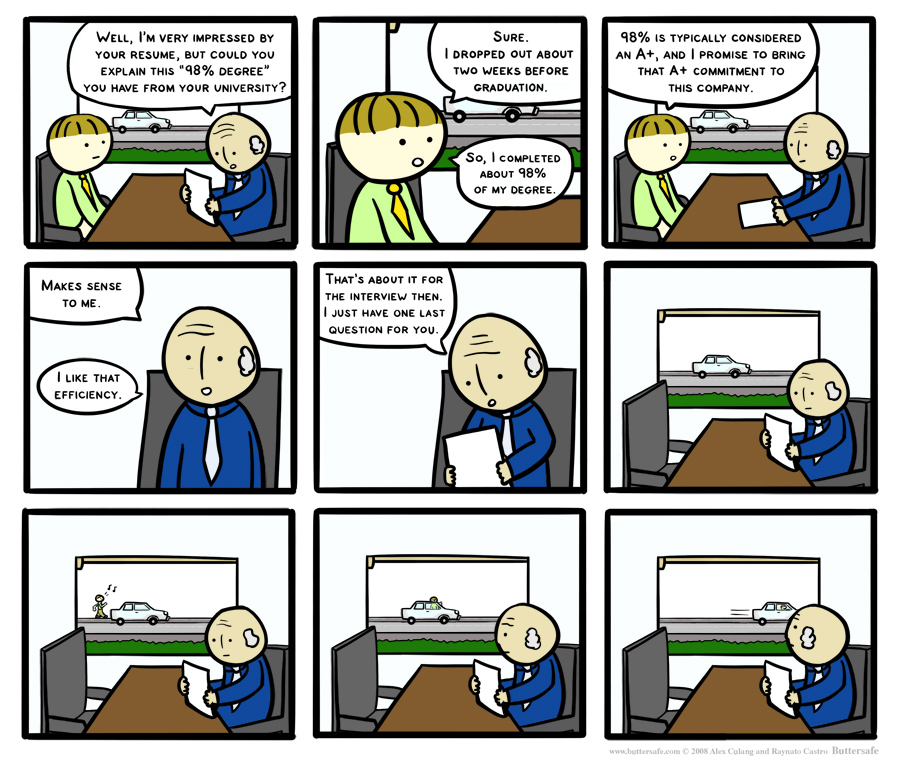


 s
s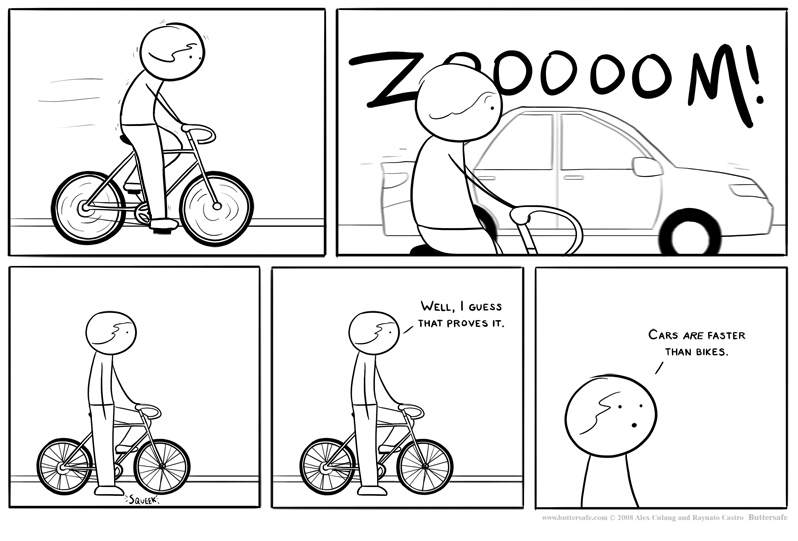

 Woman in the World
Woman in the World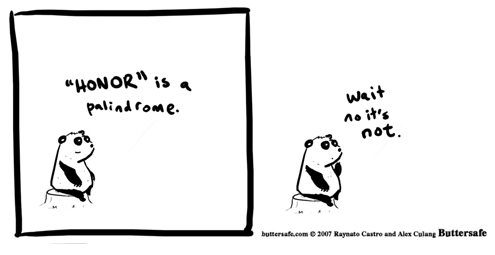




.jpg)
